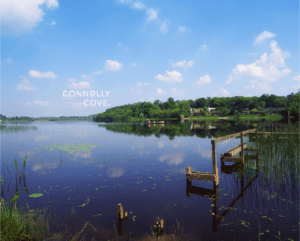The Giant’s Causeway: Unravelling the Tapestry of Geology and Mythology

Updated On: April 21, 2024 by Noha Basiouny
The Giant’s Causeway, a mesmerising coastal formation located in County Antrim, Northern Ireland, stands as a testament to both natural marvel and folklore. This awe-inspiring site is made up of approximately 40,000 interlocking basalt columns, a consequence of ancient volcanic activity and one of nature’s most fascinating geological puzzles. Recognised as a UNESCO World Heritage Site, it sparks wonder and curiosity not only for its scientific significance but also for the mythology wrapped around it. The Causeway is said to be the handiwork of the legendary Irish giant Finn MacCool, who was created as a stepping stone to Scotland, where he would face his Scottish counterpart.
Delving into the ecology and biodiversity of the causeway reveals a unique habitat rich in coastal plant and animal life, underscoring the importance of sustainable tourism and conservation efforts. Our experience of this incredible site is as multifaceted as its formation, from understanding its historical context to enjoying the local community and its connection to the Causeway. Its geological intricacies can be compared to similar formations across the globe, while its presence in art and literature marks its cultural impact far beyond the physical site itself.
Table of Contents
The Giant’s Causeway: Historical Context and Significance

In addressing the Giant’s Causeway, we’re discussing not only a natural wonder but also a site of immense historical and cultural significance. Nestled on the edge of the Antrim plateau in Northern Ireland, its legacy intertwines geological marvels with cultural narratives, earning its dual recognition as a UNESCO World Heritage Site and a cornerstone in European heritage.
UNESCO Designation
The Giant’s Causeway was designated a UNESCO World Heritage Site in 1986 due to its outstanding geological features, displayed in the approximately 40,000 interlocking basalt columns, the result of ancient volcanic activity. This recognition places it among the most significant natural sites in Europe and the world, highlighting its global importance and the need for its preservation.
Cultural Impact
The Causeway’s cultural impact is profound; it has captured the human imagination and inspired artists, storytellers and scientists alike. It plays a pivotal role in Irish folklore, most notably in the legend of Finn McCool, and its hexagonal tessellations have influenced patterns in art and architecture. The site’s cultural resonance extends beyond its immediate location, symbolising the interconnectedness of natural history and human culture across Europe.
In our dialogue on the Giant’s Causeway, we’ve illuminated its standing as a nexus where geology and mythology beautifully converge, reinforcing its historical context and significance.
Geological Formation
In exploring the Giant’s Causeway, we’re delving into a world where geological wonders speak volumes about our planet’s fiery volcanic history. The striking landscape is a testament to the incredible forces of nature that have shaped it over millions of years.
Basalt Columns and Volcanology
The Giant’s Causeway is renowned for its basalt columns, a marvel of volcanology. These structures were formed from an ancient volcanic fissure eruption. During this eruption, molten lava flowed, creating a plateau of basalt. Scientists have elucidated that this occurred between 50 and 60 million years ago, underpinning the area’s significance in geological studies.
The Role of Lava
Lava plays a pivotal role in the causeway’s formation. As the volcanic activity subsided, the surface lava cooled and contracted. Simultaneously, the deeper lava flows continued to feed the cooling upper layers, establishing the foundation for the columnar jointing that we observe today.
Columnar Jointing Process
The columnar jointing process is a fascinating spectacle of geology, orchestrated by the cooling and solidification of lava. As the thick lava cooled quickly upon contact with the sea, it resulted in the contraction and fracturing of the surface into hexagonal columns. This rapid cooling and the varying speeds at which the lava solidified led to the distinctive geometric pattern that makes the Giant’s Causeway an iconic geological site.
The Myth of Finn MacCool
Before delving into the rich tapestry of Irish mythology, one story that stands prominent is the legend of Finn MacCool, associated with the remarkable formation known as the Giant’s Causeway. This tale, interwoven with geographical wonder, depicts an epic battle of giants across the seas.
Irish Legends
In Irish legends, the Giant’s Causeway is said to be the work of the colossal Finn MacCool (Fionn mac Cumhaill), a magnificent giant who once roamed the island. It’s believed that he created this rocky bridge to accept the challenge of a fight from the Scottish Giant Benandonner. The mythical bridge of basalt columns stretched all the way from Ireland to Scotland and serves as a testament to the ingenuity and strength of MacCool. This story has been a staple in the oral tradition, capturing the imagination of generations and enduring as a symbol of Irish cultural identity.
Fenian Cycle Narratives
In the Fenian Cycle narratives, Finn MacCool is not just a giant but a celebrated warrior, otherwise known as Mac Cumhaill in Irish lore. These tales form part of the larger body of work known as the Fenian Cycle, where Finn leads the Fianna warriors in many adventures protecting Ireland. His legendary status transcends the physical and is deeply enshrined in the country’s mythological history, illustrating the valour and might attribute to ancient Irish heroes. Finn MacCool’s influence extends beyond the fables to embody the very essence of Irish folklore and its intrinsic connection to the land’s dramatic landscapes.
Ecology and Biodiversity

The Giant’s Causeway is not only a geological wonder but also a haven for diverse ecosystems. The area is renowned for its unique ecological landscape, featuring an array of local species and ongoing conservation initiatives.
Local Flora and Fauna
In the rich forests surrounding the Giant’s Causeway, we find a variety of trees and plants that are native to this part of Northern Ireland. The National Trust manages these lands, ensuring that the local flora thrives. Fragrant bluebells, wind-tossed grasses, and gorse bushes add texture and colour to the landscape. Birds, from the melodious blackbird to the swift European robin, enchant visitors with their songs. The surrounding nature offers both shelter and sustenance to these birds, resulting in a thriving avian population.
Conservation Efforts
We are committed to the preservation of this UNESCO World Heritage site’s natural beauty. Our conservation efforts are focused on protecting and nurturing the Giant’s Causeway’s biodiversity. Through careful management of human impact, habitat restoration projects, and educational programmes, we aim to maintain this extraordinary ecological landscape. These initiatives are crucial to safeguard not only the varied species that call this area home but also the quality of experience for future visitors who come to appreciate this fusion of nature’s artistry and mythological grandeur.
Visitor Experience
When visiting The Giant’s Causeway, tourists can expect a well-organised and educational experience. Our article provides useful insights into the facilities and services provided at this natural wonder, enhancing one’s visit to this iconic site on the Antrim Coast.
Tourism Management
Visitor Centre: The National Trust manages the Giant’s Causeway Visitor Centre, which serves as a gateway to the causeway and offers multiple facilities designed to cater to the needs of global visitors. Key features of the centre include:
- Parking: Reserved parking for guests with valid entry tickets.
- Guided Tours: Offered by storytelling experts to enrich the visitor experience.
- Accessibility: Designed to be accessible to visitors with different needs, ensuring everyone can enjoy the site.
Furthermore, the centre focuses on environmental sustainability and strives to minimise the impact of tourism on the natural landscape.
Educational Resources
Educational Offerings: The Giant’s Causeway Visitor Centre houses a wealth of educational resources. These include:
- Exhibitions: Informative displays that detail the geological science behind the causeway’s formation, as reported in publications like Nature Communications.
- Audio Guides: Provide a thorough understanding of both the geology and the local mythology connected to the causeway.
Educational resources are tailored to both adults and children to foster a comprehensive and enjoyable learning experience. Through these resources, we seek to deepen visitors’ knowledge of the Antrim Coast’s unique geological features and legendary tales.
Scientific Research and Studies
In recent years, significant strides have been made in understanding the geological formation of the Giant’s Causeway through rigorous scientific research and studies. Cutting-edge geochemical analysis and comparative volcanology have shed light on the intense volcanic activity that shaped this natural wonder.
Geochemical Analysis
Geochemical analysis has been a cornerstone in demystifying the formation of the Giant’s Causeway. Studies by the University of Liverpool have focused on the temperature at which the basaltic lava cooled to form the characteristic hexagonal columns. Professor Yan Lavallée and his team determined that the remarkable structures formed at approximately 840-890°C, a discovery that challenges long-held assumptions about columnar jointing.
Comparative Volcanology
Comparative volcanology has allowed scientists to draw parallels between the Giant’s Causeway and other geographical sites formed due to intense volcanic activity. The insight gained from studying the Eyjafjallajökull eruption in Iceland, for instance, has provided valuable comparisons, furthering our understanding of columnar jointing mechanisms. The Geological Survey of Northern Ireland uses such comparative research to enhance our knowledge of the processes that led to the formation of the Causeway’s unique landscape.
Comparative Geology
In examining the Giant’s Causeway, we encounter a fascinating display of natural architecture. Its geological kinship not only binds it to sites across our planet but also to otherworldly landscapes.
Similar Formations Worldwide
We find that Fingal’s Cave, on the Scottish Island of Staffa, bears a striking resemblance to the Giant’s Causeway. Both share the same type of hexagonal basalt columns, a testament to similar volcanic processes. In fact, due to these morphological similarities, legend has it that the Giant’s Causeway was a bridge to Fingal’s Cave, constructed by mythical giants. Indeed, these remnants of cooled flows provide an international geological thread, with analogous formations seen in the USA at Devil’s Tower and in Iceland at Svartifoss.
Geological Connectivity
Our exploration of the Giant’s Causeway’s earthy connections leads us to consider even extraterrestrial ties. Comparable columnar basalt structures have been spied on Mars, showcasing the reach of volcanism across our solar system. Although separated by millions of kilometres, the formation process governed by slow cooling and contraction of thick lava flows unifies these disparate worlds, offering us a cosmic connection to our planetary neighbour. This demonstrates a universal principle of planetary geology, hinting at the commonality of our universe’s natural laws.
Art and Literature
The Giant’s Causeway, a spectacular natural wonder on the North Coast of Ireland, proves to be as much a muse for art and literature as it is a marvel of geology. Over the centuries, it has stirred the imagination of artists and storytellers alike, leading to a multitude of creative expressions.
Inspirations in Visual Arts
Susanna Drury’s seminal landscape paintings in the mid-18th Century significantly enhanced the profile of the Giant’s Causeway. Her works, such as “The East Prospect of the Giant’s Causeway” (1739), are recognised as pivotal to the Causeway’s fame, capturing its enigmatic configuration of basalt columns with intricacy. These detailed scenes resonated with the public and won her the prestigious award from the Royal Dublin Society in 1740, sparking intrigue and admiration that would ripple through the ages. Her illustrations are a testament to the site’s rich palette of artistic inspiration.
In the 19th Century, the Causeway’s allure continued to emerge in arts, appearing in various forms, from oil paintings that graced the salons to etchings and prints that circulated amongst the eager audiences of the time.
Myths in Modern Media
Folk tales, steeped in the lore of giants and enchantment, have transcended generations, remaining embedded in the cultural fabric of the region. One such tale tells of the giant Finn McCool constructing the Causeway to reach the Scottish Coast to challenge his adversary. These tales, rooted deeply in the Giant’s Causeway’s majestic presence, have made their way into modern media, showcasing the continuous interweaving of mythology with cultural output.
Adaptations of these stories can be found across a variety of media, including animations, novels, and feature films, where they are introduced to new audiences and ensure that the legends tied to the iconic geological formation live on. Through these varied forms, the myths of the Causeway continue to spark wonder and serve as a narrative bridge from past to present.
The Role of the Causeway in Local Communities

The Giant’s Causeway, with its dynamic interplay of natural grandeur and cultural significance, stands as a pivotal fixture in the fabric of the local communities along the Causeway Coast. From the economic influx provided by global tourism to the preservation and celebration of local heritage, its impact is profound and multifaceted.
Economic Impact
The Giant’s Causeway is a cornerstone for the economy of the Causeway Coast, drawing in visitors from around the world. This influx of tourism bolsters local businesses, from accommodation and restaurants to tour operators—each becoming intertwined with the visitor experience at the site. The attraction not only supports jobs in these sectors but also promotes the goods and services of local artisans, amplifying the financial benefits within the community.
Heritage and Identity
Integral to the cultural tapestry of our region, the Causeway serves as a symbol of local heritage. The Glens Heritage Trust works in harmony with the community to uphold the values and traditions that are rooted in the region’s history. In Belfast and beyond, the towering basalt columns of the Causeway are an iconic emblem for Northern Ireland, underpinning a sense of identity rooted in geological marvel and legend.
Challenges and Threats

The Giant’s Causeway faces ongoing challenges that could impact its future. We must consider the effects of both natural erosion and human impact to preserve this geological wonder for generations to come.
Natural Erosion
Erosion is an ongoing natural process that shapes the Giant’s Causeway. Over countless years, the relentless force of the Atlantic Ocean has gradually worn away at the basalt columns that make the Causeway famous. While volcanic eruptions created this natural masterpiece, today, it’s the sea that poses the greatest threat through erosion. There are conservation efforts in place aimed at studying and mitigating the effects of natural erosion, but there is a delicate balance to be struck between allowing nature to take its course and intervening to preserve this extraordinary site.
Human Impact
Aside from nature’s hand, human activity has also placed pressure on the Giant’s Causeway. Increased footfall from tourism, alongside the risk of littering and unintended damage from visitors, prompts significant concern. Our efforts are ongoing to ensure visitors can enjoy the site without leaving a harmful imprint. This involves educational initiatives, improved infrastructure that guards against undue wear and tear, and the promotion of sustainable travel practices. It is in our collective interest to adopt a respectful approach to touring this unique formation to keep the Giant’s Causeway’s mythology and geology intertwined and intact for the future.
Frequently Asked Questions
We’ll explore some of the most common enquiries surrounding the intriguing Giant’s Causeway, delving into both its fascinating geological formation and the rich tapestry of myths that accompany it.
How did geological processes lead to the formation of the Giant’s Causeway?
The Giant’s Causeway was created by intense volcanic activity about 50 to 60 million years ago. Molten basalt lava seeped through the chalk beds, forming an extensive plateau. Upon contact with the sea, the lava cooled rapidly, contracting and fracturing to shape the mostly hexagonal columns that make this site iconic. Further details on this process are elaborated in an insightful article detailing the volcanic origins of the Causeway.
What mythological tale is associated with the origins of the Giant’s Causeway?
Mythology attributes the creation of the Giant’s Causeway to the legendary Irish giant Finn McCool. He is said to have built the causeway as stepping stones to Scotland to confront his Scottish rival Benandonner. The full legend, rich in cultural significance, is recounted in the Giant’s Causeway Guide, drawing connections between the geological wonder and its mythical backstory.
Can you explain the scientific theory behind the unique basalt columns at the Giant’s Causeway?
Scientifically, the striking basal columns are a result of the rapid cooling of lava in contact with water. This sudden temperature change caused the lava to contract and crack, producing roughly hexagonal shapes. The formation of basalt is a natural wonder illustrating nature’s geometry.
Who are Finn McCool and Benandonner in the context of the Giant’s Causeway Legends?
In the legends associated with the Giant’s Causeway, Finn McCool, also known as Fionn mac Cumhaill, is an Irish giant famed for his strength and wit. Benandonner is his Scottish counterpart, sometimes depicted as larger and more menacing. Their rivalry and subsequent encounters form the basis of many tales surrounding the myths of the Causeway.
What stories from Irish folklore involve the Giant’s Causeway?
Irish folklore is steeped in stories where the Giant’s Causeway is a central element. Besides the primary legend of Finn McCool and Benandonner, there are tales of giants and creatures from other realms interacting with the Causeway. These stories range from amusing encounters to moral lessons, each adding layers of meaning to this natural masterpiece.
In what ways do geology and mythology intertwine at the Giant’s Causeway?
At the Giant’s Causeway, mythology enhances our appreciation of the geological marvel. Legends lend an aura of mystery and wonder to the location, while geology provides a solid scientific explanation for its formation. This interweaving of the two presents a holistic view where natural history and cultural heritage coexist, honouring both the science and the stories connected to the iconic site.






